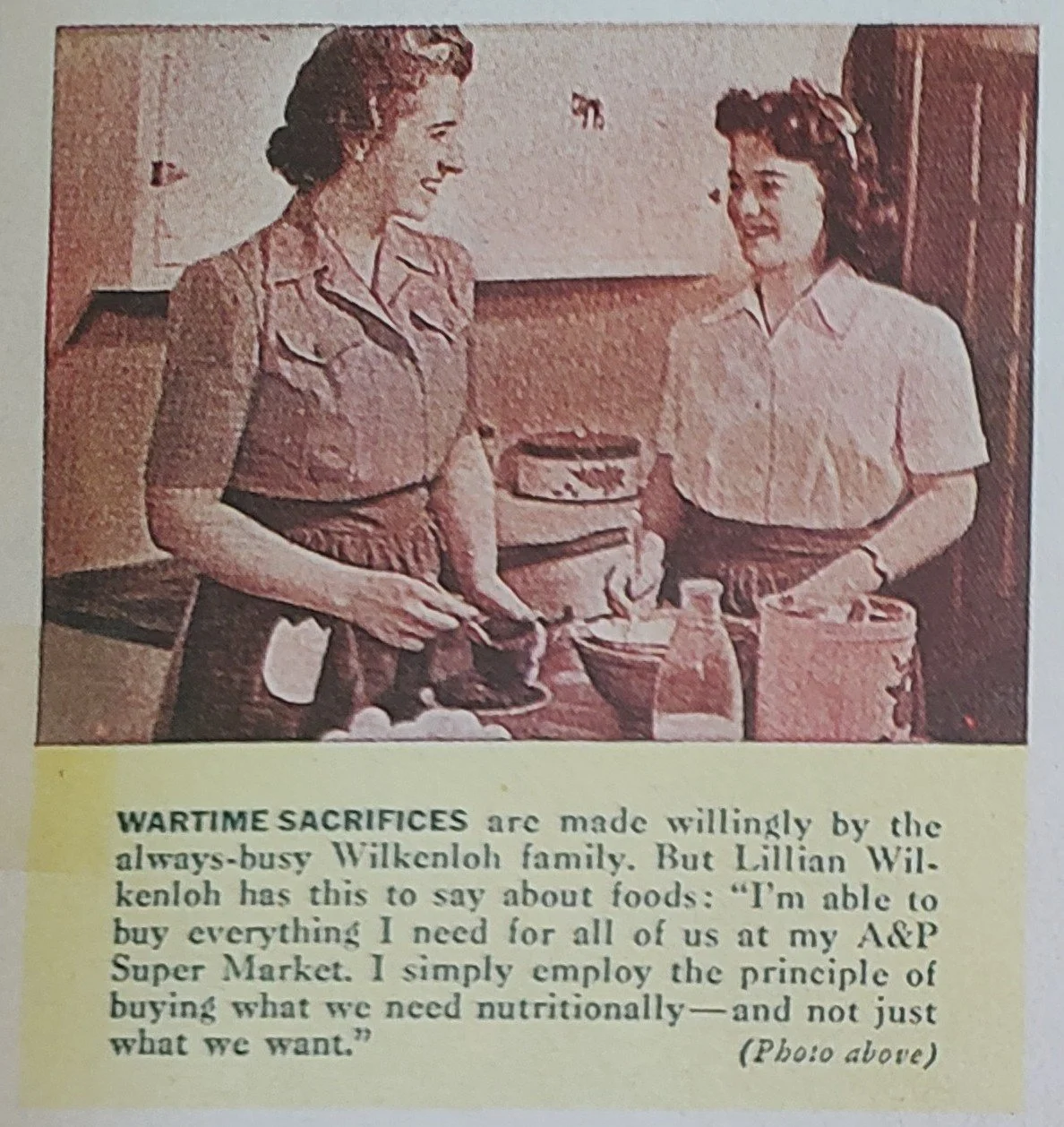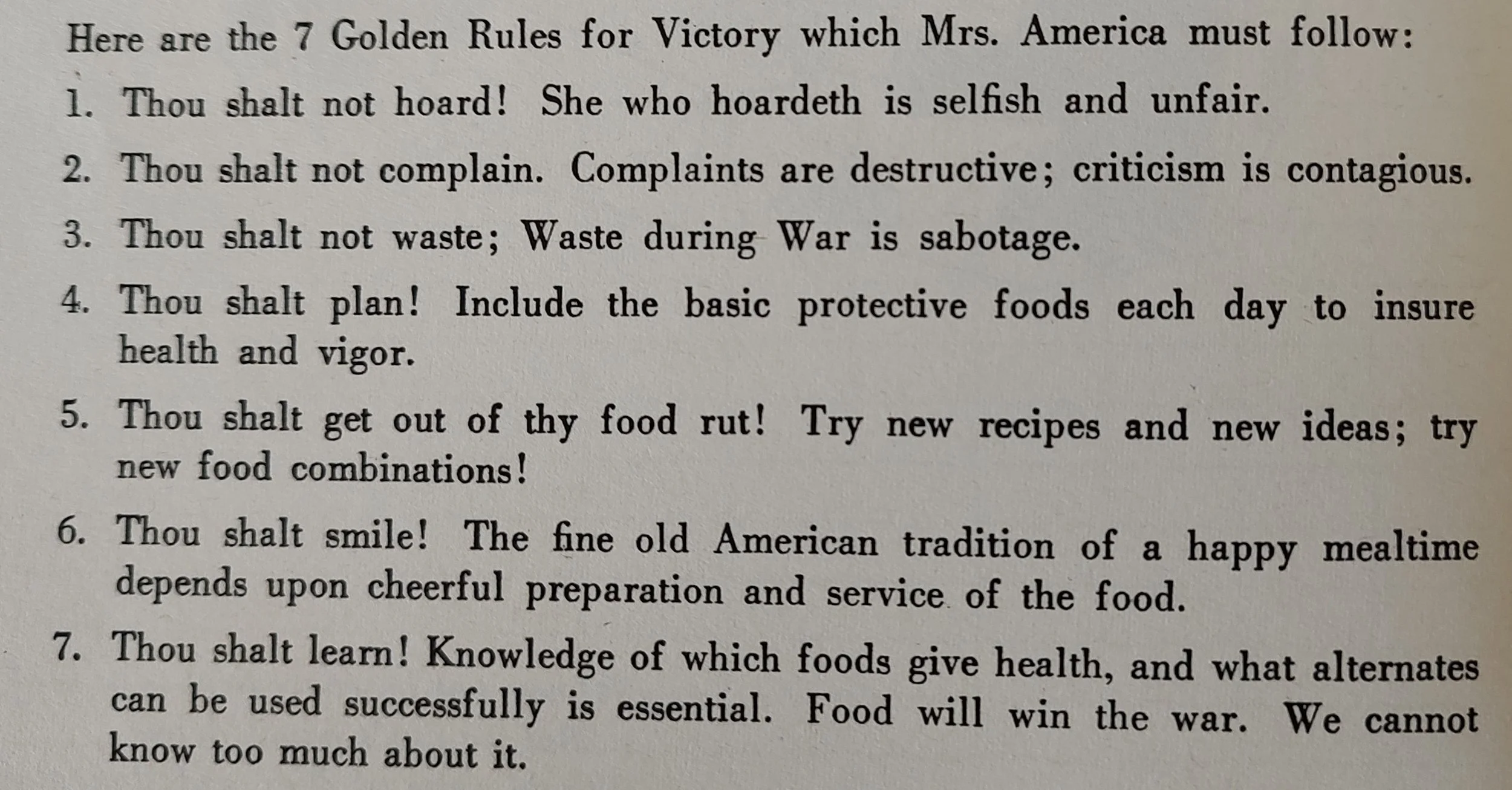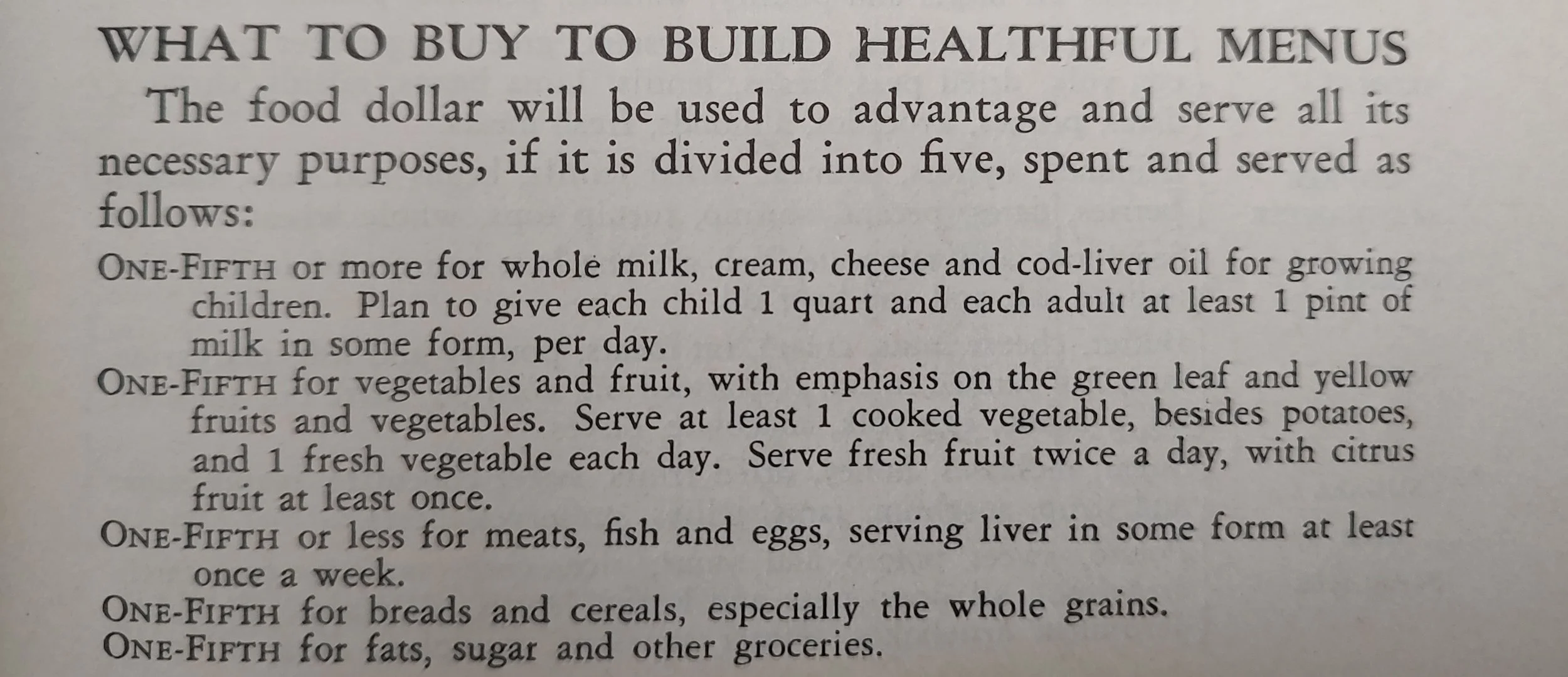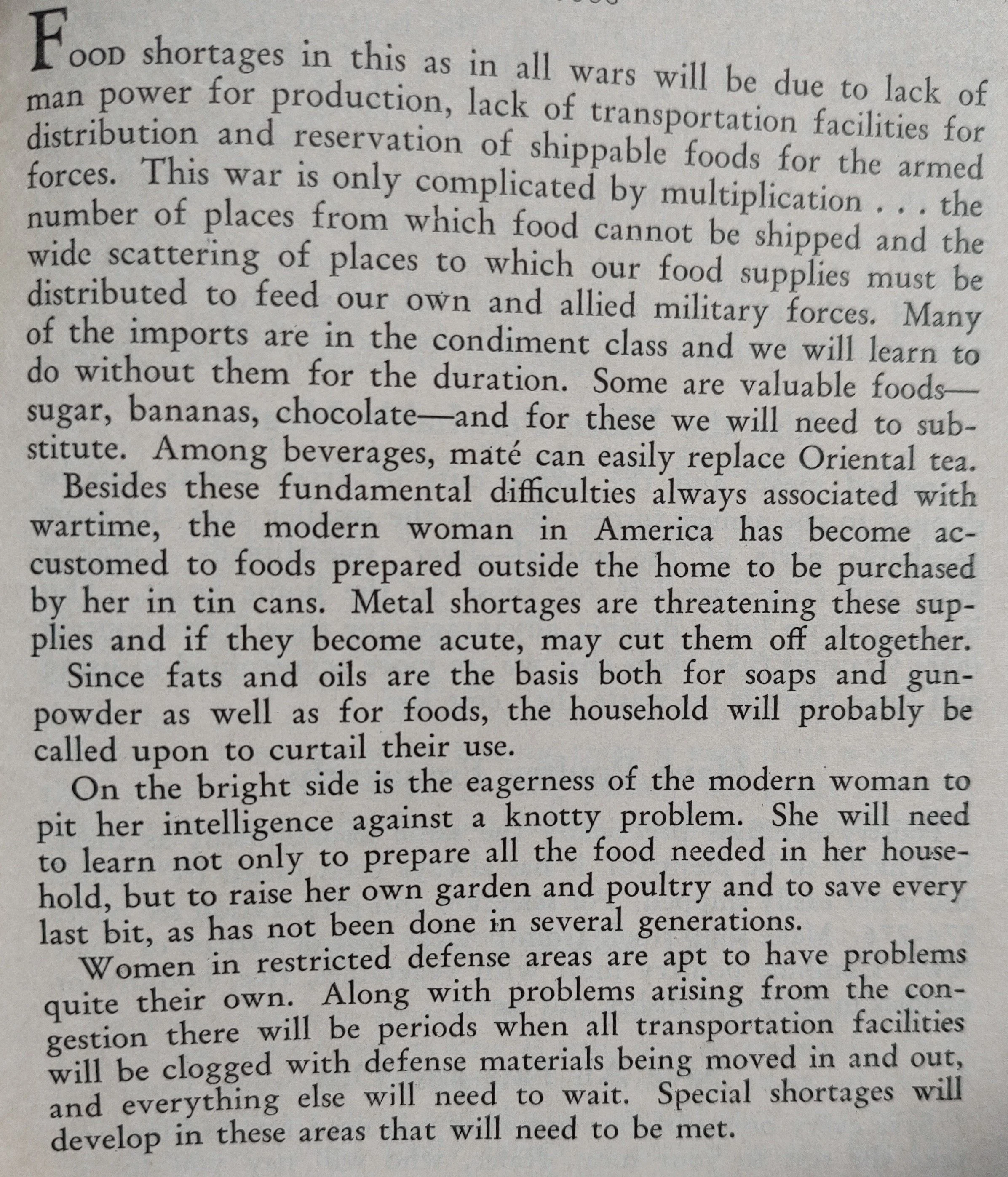To Plan or Not to Plan—Meals in Wartime
In 1943 A&P Supermarkets published the account of Mrs. Lillian Wilkenloh, an average American wife and mother. Because of the war, she had added a number of patriotic activities to her usual homemaker duties. In the same year, Prudence Penny’s book, Coupon Cookery, was published as “a guide to good meals under wartime conditions of rationing and food shortages.”
The Plight of the Wartime Shopper
It isn’t clear whether either of these women ever existed but they certainly represented women of the time. Americans were bombarded in many ways during World War II. Although—with the terrible exception of Pearl Harbor—fighting was done in other lands, millions of Americans had gone to fight in those arenas. Everyone was weary from the Great Depression, yet under duress to supply the rest of the world.
Americans on the Home Front worked at everything from knitting to salvaging war materials to producing tanks, planes, dried eggs and chocolate. All while keeping up morale. And in the midst of it all, dealing with inflation. In the A&P advertisement, Mrs. Wilkenloh said, “I meet my foot budget in spite of rising costs.” And in spite of food shortages. The ad explains her strategy:
Wartime Methods for Planning Meals
Getting rid of the “old-fashioned shopping list” is intriguing. Many other wartime cookbooks seemed to work by planning menus before shopping. But Mrs. Wilkenloh marketed from the shelves, starting at the meat counter, moving to fresh fruits and vegetables, and then selecting other ingredients or alternates for items that had “gone to war.” She purchased ready-made desserts to save on sugar. The smaller print reveals another part of her strategy: “I simply employ the principle of buying what we need nutritionally—and not just what we want.”
Prudence Penny doesn’t suggest going to the grocery store without a plan. Mrs. Wilkenloh’s method might work for experienced homemakers but could have caused waste or other problems for many cooks. However, her strategy was often necessary only because people had to shop to find out what foods were available for the week. She was also able to beat inflation by finding deals on the most expensive items. Between shortages, ration coupons and inflation, making sure each person got enough nutrition to stay healthy became more challenging than the daily crossword puzzle.
Coupon Cookery’s strategy was to plan menus before shopping, using a chart to list grocery items along with whatever ration coupons would be needed. It included 10 pages of rationed ingredients! But rather than buying ingredients without a shopping list, it recommended planning nutritionally and with a willingness to try new recipes or combinations. Prudence Penny shares the 7 Golden Rules for Mrs. America:
These rules—while recommending a plan—still admit that alternatives were often needed. The author writes that good food “does not necessarily involve an elaborate, expensive shopping list. Good food more frequently depends on the intelligent choice of available materials, coupled with ingenious preparation to bring out the utmost satisfaction in flavor, nutritional value and appearance.” I wonder if Mrs. Wilkenloh carried any recipe cards on her grocery tours; or perhaps she rotated menus and knew the ingredients by memory?
Actually, the United States government—similar to the British and other governments during World War II—made a concerted effort to educate the public about nutritional needs. There is no way to overstate how vital it was for the Home Front population to stay healthy and able to work. From America came a great deal of munitions, food and other supplies needed by the Allies around the world. In 1943 the government published a food guide chart and suggested menu combinations.
The American Woman’s Cook Book
Many cookbooks from the World War II era also included extensive nutrition and menu-planning guides. Along with Coupon Cookery, the Wartime Edition of the American Woman’s Cook Book released in 1943 with an entire chapter on food values and meal planning. It recommended building menus by fifths:
“Every meal,” it says, “should be planned to meet first the needs of the youngest and weakest member of the family.” Points to keep in mind when planning menus include the staying quality of food, the most satisfactory conditions of digestion and elimination, not including too much sweet food or too much meat and eggs, the texture of food, the appearance of food and the flavor of food.
Another chapter on Wartime Cookery advises how to use leftovers or make substitutions for items no longer available. The introduction to this chapter is a window into the world of the wartime homemaker:
Homemakers during the war had so much more to contend with than most would have had in peacetime. They valiantly worked around rationing limitations, shortages and unusual ingredients while saving every scrap—of food and packaging—and even rendering fat for munitions. Both Coupon Cookery and the American Woman’s Cook Book offered extensive help, from how to create soups on the fly to which combinations would work best. They gave recipes for all kinds of extras, from sauces to pickles, and hints on how to use spices, citrus rinds, extracts and garnishes. They included creative workarounds like using finely crushed cheese crackers to save the cheese ration. Such cookbooks were more than recipe collections—they were an education.
References
A&P Supermarkets 1943 advertisement (reprint), Home Front Life, Spring 2012. Harrisburg, PA: 310 Publishing, LLC, p. 5.
Penny, Prudence. Coupon Cookery. California: Murray & Gee, Inc., 1943.
Berolzheimer, Ruth, Ed. The Victory Binding of the American Woman’s Cook Book: Wartime Edition. Chicago, IL: Consolidated Book Publishers, Inc., 1943.
Basic 7 Food Charts, Library of Congress, 1943.
Jesus said to him, “I am the way, and the truth, and the life. No one comes to the Father except through Me.”
John 14:6









